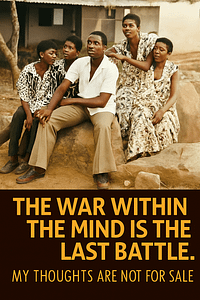
Reclaiming the Blueprint Hidden in the Ancestors’ Code
African Spiritual Technology (AST) is not superstition. It is not folklore. It is a coded system of metaphysical science, rooted in balance, vibration, memory, and cosmic law. Suppressed, demonized, and fragmented through colonization, AST now returns as part of the great reawakening.
Below are five ancient pillars—unwritten laws passed through rhythm, ritual, and resonance:
🌀 1. Law of Correspondence
As above, so below. As within, so without.
AST recognizes that inner disorder leads to outer disorder. Rituals were designed to realign not just the individual, but the entire environment—energetic hygiene for the village and the land.
📿 2. Code of Ancestral Memory
The ancestors are not in the past. They are in the system.
Names, totems, dances, and language carry data. AST is built on memory preservation—not as history but as a living network. When memory is erased, identity collapses.
🔊 3. Power of Sound and Vibration
Drums are not instruments—they are technologies.
Through chants, ululations, and sacred instruments, sound was used to alter spiritual fields, call upon energies, and encode instruction. AST understands the universe as frequency.
🧭 4. Land and Spirit Symbiosis
Every sacred site is a portal. Land is not property—it is prophecy.
AST is rooted in the earth. Mountains, rivers, and forests are not background scenery—they are repositories of power. Colonization severed this bond.
🧠 5. Divination as Intelligence Gathering
Diviners were not fortune tellers. They were intelligence officers of the spirit.
Using systems like Ifá, bones, shells, and trance, AST gathered real-time information from the invisible realm. It was strategic metaphysics, used for agriculture, warfare, healing, and diplomacy.
🧠 Conclusion
These five laws are only fragments of a much larger system—a system intentionally buried. But like all powerful systems, it can be reactivated.
African Spiritual Technology is not dead. It is encrypted.
The question is not “Is it real?”
The question is “Are we ready to remember?”
